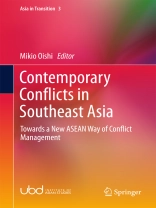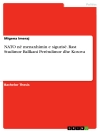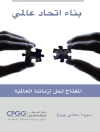This book looks at major contemporary conflicts —intra and interstate— in Southeast Asia from a conflict management perspective. Starting with the view that the conventional ASEAN conflict-management methods have ceased to be effective, it looks for new conflict-management patterns and trends by investigating seven contemporary cases of conflict in the region. Focusing on the incompatibilities involved in each case and examining how they have been managed—whether by integration, co-existence, elimination or maneuvering around the conflict—the book sheds new light on the significance of managing conflict in achieving and maintaining the stability of the Southeast Asian region. It makes a significant theoretical contribution to the field of peace and conflict studies by proposing the concept of “mediation regime” as the key to understanding current conflict management within ASEAN.
Mục lục
Chapter 1: Introduction: The ASEAN Way of Conflict Management under Challenge.- Chapter 2: Ending a Long-Standing Intrastate Conflict through Internationalisation: The Case of Aceh in Indonesia.- Chapter 3: Not the “ASEAN Way”: The Southern Philippines Conflict and its Internationalization.- Chapter 4: Spiralling Insurgency in the Deep South: Thailand’s Unseen Road to Ethnic Conflict Management.- Chapter 5: Developing a Way to Influence the Conduct of the Government in Intrastate Conflict: The Case of Myanmar.- Chapter 6: The Thailand-Cambodia Preah Vihear Temple Dispute: Its Past, Present and Future.- Chapter 7: Circumventing Conflict: The Indonesia-Malaysia Ambalat Block Dispute.- Chapter 8: The South China Sea Dispute: Formation of a Mediation Regime and Challenges for Management.- Chapter 9: Conclusion: Is a New ASEAN Way of Conflict Management Emerging?.- Index
Giới thiệu về tác giả
Mikio Oishi has been involved in research and publication on Peace and Conflict in the Asia-Pacific region. In addition to the new ASEAN Way of conflict management, his current research interests include: managing territorial disputes in East Asia; the Shanghai Cooperation Organisation as a conflict management regime; and the Pax Sinica (peace by China). Among his recent publications are: International Conflict in the Asia-Pacific (Routledge 2010, with Jacob Bercovitch) and Managing Conflict in Economic Development (LAP 2011).












